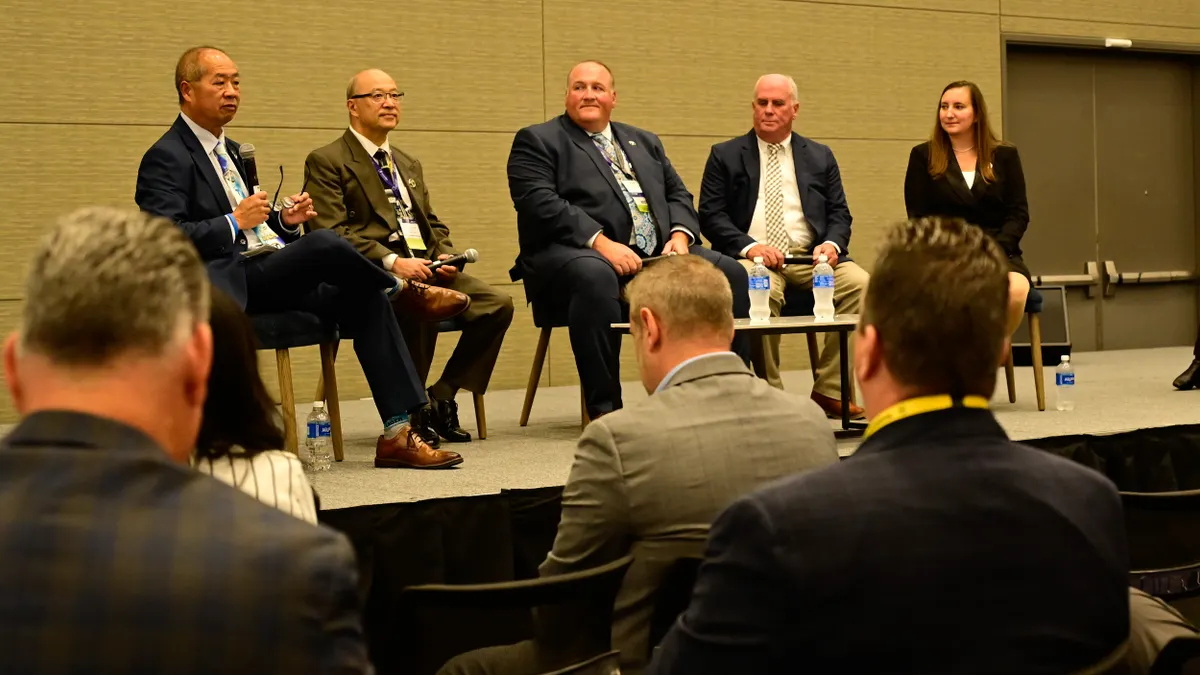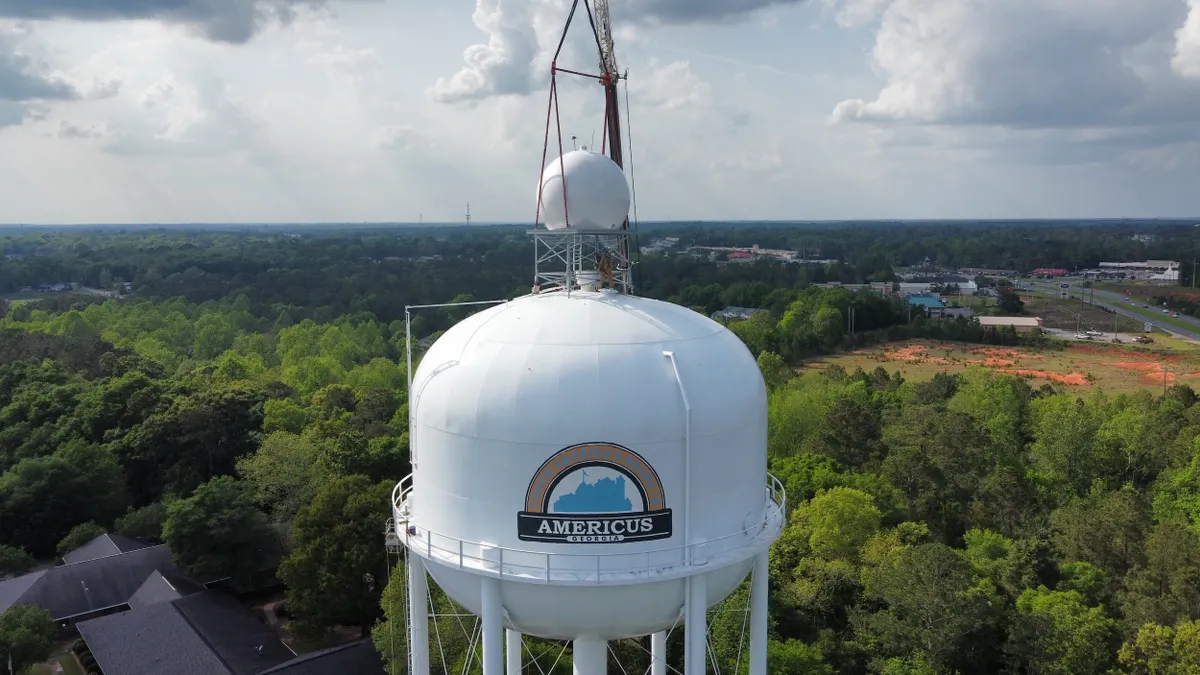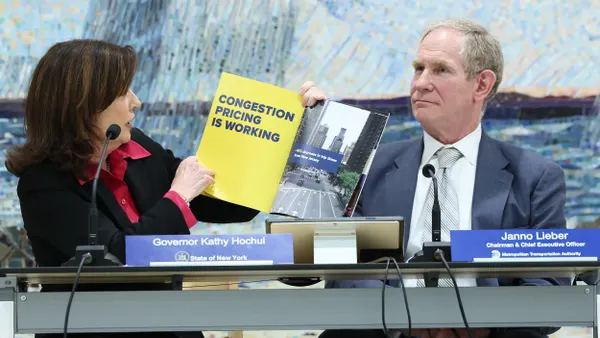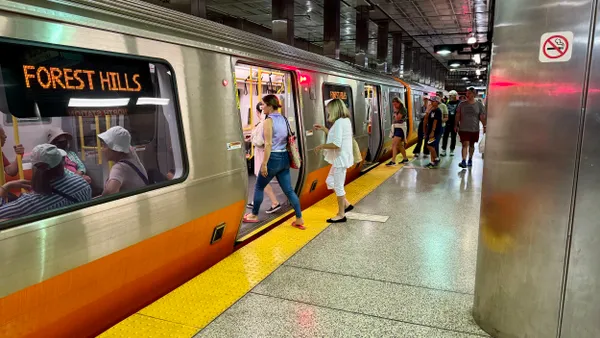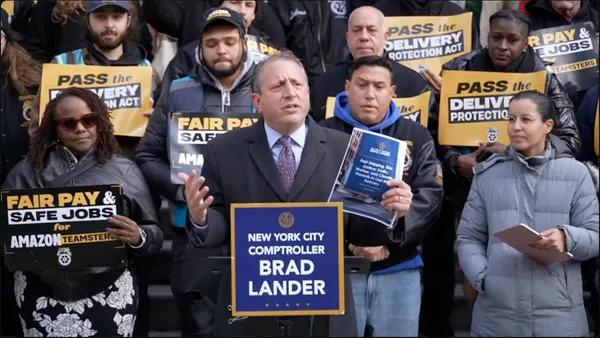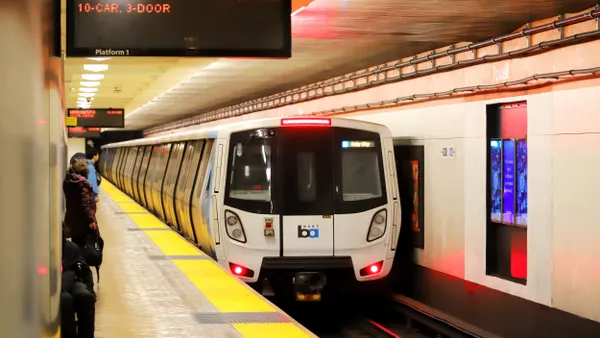Plagued by runaway trains, collisions, derailments and numerous speed restrictions on its rail transit lines that delayed trains, the Federal Transit Administration assumed safety oversight of the Massachusetts Bay Transportation Authority three years ago, the agency which serves the greater Boston area.
Fast forward to December 2024: more than 220 speed restrictions had been eliminated, over a quarter-million feet of rail replaced and riders were getting to their destinations faster. Sam Zhou, the MBTA’s chief engineer and assistant general manager, called the project to fix the system “a monumental mission and task,” adding, “but we made it.”
Zhou and other MBTA leaders explained how they turned the transit agency around in less than two years during a panel discussion at this year’s American Public Transportation Association conference in Boston. The fix began with the appointment of Phillip Eng as general manager of the MBTA in April 2023. “It’s time for a new way of doing business at the MBTA,” Eng said upon his appointment.
The repair work would necessitate 23 closures along four lines, some for weeks at a time. Existing bus routes or free shuttle buses helped riders get where they needed to go, but initially, they weren’t happy. “When we started this program, we faced a lot of opposition,” Salina Martin, MBTA director of operations project delivery, said on the panel. “Nobody wanted their line shut down.” Eng said the closures were better and more efficient than trying to get the work done piecemeal overnight or on weekends.
Martin explained that the speed restrictions were categorized and “we tackled the locations that needed the most help first.” Sometimes, other factors played in. For example, she said that one closure on a heavily traveled line was initially scheduled for October, but to better serve students when they returned to school, the closure was moved to the prior summer.
As Eng promised, the agency would do things differently. “We broke down silos,” he said. Contractors worked closely with MBTA maintenance and engineering teams. When a line or portion of a line was closed, the goal was to get everything done that needed to be done on that stretch of rail line. That sometimes included stairs, escalators, lighting and station improvements, “because shutting down a line is very expensive,” Zhou said.
“We took every opportunity to do more and more and more, and over the course of the year of 2024, we became very, very good at not just fixing the immediate problem,” said John Ray, senior director of maintenance-of-way. “We weren't interested in band-aid cures.”
The team learned a lot along the way. Martin said, “One of the main points was having constant communication” among the teams with daily check-in calls. Zhou learned to lay out the terms with each contractor explicitly and include disincentives as penalties for not meeting deadlines. Chief Operating Officer Ryan Coholan found it valuable to include an extra day to account for last-minute issues on the worksite.
Angry riders became supporters of the project. Eng said they heard from transit users who were looking forward to the work being done in their communities, “because they saw the benefits that other people were getting.”
On Dec. 23, 2024, the MBTA and Massachusetts Gov. Maura Healey celebrated the removal of slow zones for the first time in 20 years. Round-trip travel times were shortened by over 20 minutes on the Orange Line, nearly an hour on the Red Line, 4 minutes on the Blue Line and almost 9 minutes on the Green Line, according to the MBTA.
Eng summed up by saying that the project was more than “just getting work done;” it was a “culture shift with the public, [showing] we can deliver the results that we promised, or even over-deliver.”



